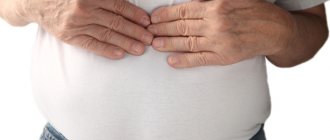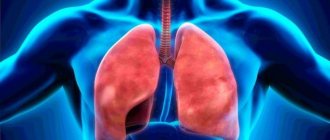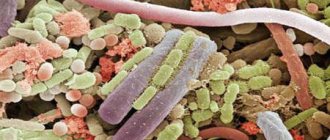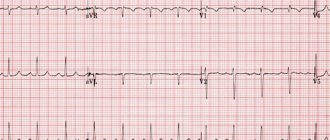Vegetative vascular dystonia in children is a diagnosis that is often made by a doctor when the child’s health is unsatisfactory and not progressing.
At a young age, a child, even if he can already speak a little, is not able to clearly explain his illness. In case of deterioration of the functional state. Teenagers, although they can adequately express their thoughts, are often unable to coherently describe their poor health.
The doctor calls this inexplicable condition (the disease is not recorded based on the objective results of surveys and tests).
Yes, the diagnosis of “ vegetative vascular dystonia ” does not seem to pose a threat to the child’s health at the moment. But parents should understand that vascular dystonia is most often a harbinger of the possible development of some pathology. That is, in the nervous system (specifically in the vegetative section) a failure of the regulatory function occurred.
This failure leads to destabilization of life support systems, which can lead to a number of diseases. By not engaging in treatment, which should be determined by the doctor, parents are dooming the child in advance to possible unpleasant consequences.
Reasons for development
Approximately 25-80% of children are susceptible to the development of vegetative-vascular dystonia. As a rule, children living in large cities have an increased risk of autonomic dysfunction. VSD can manifest itself at absolutely any age in children, but according to statistics, the average age of pathology is 7 years. Also, children are especially prone to developing neurocirculatory dystonia during puberty.
The main reasons that cause vegetative-vascular dystonia are directly related to psychological and socio-economic factors:
- physical and mental stress that exceeds the norm that a child can withstand;
- the child’s adaptation to new conditions in society or in school life;
- large volume of training program;
- fast pace of learning;
- the use of new products, household chemicals and cosmetics that negatively affect the child’s health;
- change of world view;
- low social status of the family;
- difficulties communicating with other children;
- excessive demands of family members on the child;
- the child’s self-esteem is too low;
- a large flow of information that the child’s psyche is not able to process.
A child’s experience of situations at school and family that lead to stress adversely affects the state of the vascular and nervous system. Such disorders can fail in many systems within the body. There have been many cases of genetic predisposition to autonomic dysfunction, but the heredity factor is not the key factor in the development of the pathology.
Which specialist should I contact?
Before making a diagnosis of “vegetative-vascular dystonia in adolescents,” it is necessary to exclude more serious diseases. You should consult a therapist, gynecologist, or cardiologist. The nature of the appearance of air shortage, i.e. shortness of breath, will be checked by an endocrinologist. You will need to do an ultrasound of the thyroid gland.
Each of the recommended specialists will determine what tests the teenager will need to undergo. But a general blood test will definitely need to be taken. A detailed analysis may be needed. If the above specialists write “Healthy” on the teenager’s card, then the final diagnosis will be made by a psychotherapist.
You should not be critical of this specialist, because he is the one who specializes in the autonomic system of the body. A psychotherapist has nothing to do with psychiatry. While a psychiatrist treats mental disorders, a psychotherapist deals with independent symptoms of psychological problems. He can determine the cause of unreasonable shortness of breath in a teenager. But the cause of shortness of breath can be even a banal overload at school or a quarrel between parents at home.
The instability of a teenager’s psyche and emotions can provoke more serious problems. Headache and increased heart rate may not be a sign of arrhythmia or brain cancer. After carefully conducted examinations, it may be discovered that the teenager, contrary to fears and assumptions, is absolutely healthy. Then you have a direct path to a psychotherapist.
After the causes and symptoms of vegetative-vascular dystonia have been confirmed by a specialist, in the future, for vegetative-vascular dystonia in adolescents, the following may be prescribed: antihypertensive therapy - drugs to lower blood pressure, to improve blood circulation - adrenergic blockers; antioxidants – to support the nervous system; tranquilizers and sedative antidepressants - to relieve anxiety and depression.
Neurocirculatory dystonia, autonomic dysfunction - these terminologies were used exclusively in the post-Soviet space and are associated exclusively as relics of the Soviet past. According to most reviews, after the end of the “problem” age, the manifestations of dystonia sharply disappear in a teenager.
Classification
There is no approved classification of vegetative-vascular dystonia; however, there is a division of pathology into generally accepted types. Autonomic dysfunction can be divided into two main types:
- primary – the pathological condition develops independently;
- secondary – develops as a result of diseases of the nervous system or internal organs (spinal cord or brain injuries, renal failure, diabetes mellitus).
Depending on the form of the disease and the nature of the course of VSD, it can be:
- constant – a chronic form of dystonia that does not have drops and jumps;
- paroxysmal - periodically exacerbations occur, but the rest of the time vegetative-vascular dystonia is invisible;
- mixed – signs of the two above types are present;
- hidden - the likelihood of developing dystonia appears only with a strong provoking factor.
The classification of disorders that occur during VSD in the cardiovascular system is as follows:
- hypotonic type – blood pressure is much lower than normal;
- hypertensive type – high blood pressure accompanied by a strong heartbeat;
- cardiac - this type of VSD is characterized by disturbances in the heartbeat, rhythm changes, and jumps;
- mixed type - includes all of the above types of violations.
There are a number of factors by which autonomic dysfunction can be divided into several more types, but the essence will always be the same: pathology can be accompanied by many unpleasant symptoms, so it is necessary to seek their exact definition from a qualified doctor and follow all his instructions.
The course of VSD - differences between girls and boys
Girls
The combination of unfavorable factors is complemented by a deterioration in well-being associated with changes in the external environment - weather, home decor.
- The onset of age 13–15 years further complicates the course of VSD. This is a time of teenagers’ dissatisfaction with their own appearance, categorical judgments, perception of the world and others in only two colors - black and white. This psychological state leads girls to frequent nervous breakdowns, manifested mainly by excessive tearfulness, sometimes by harsh conversations with parents, and intolerance towards others.
- An increase in symptoms is observed during menstruation.
- The appearance of VSD in teenage girls is often associated with signs of hypotension and weakness. Attacks of dizziness, trembling of hands and legs are common. Lack of treatment provokes aggravation of pain, and problems with the digestive system occur.
Boys
Young men react differently, which is why they are diagnosed with VSD more often. Young people, having graduated from school and studying at a university, actively engage in sports, trying to achieve certain results.
Heavy physical activity at 15–20 years of age, combined with ongoing hormonal surges, exceeds in intensity those of girls. They create the ground for the appearance of symptoms of dystonia, affecting the functioning of the cardiovascular system.
Young people with VSD feel:
- unusual fatigue;
- headache;
- deterioration in the ability to remember educational material;
- sudden jumps in blood pressure;
- sudden attacks of tachycardia, chest pain.
A feature of adolescent VSD of the hypertensive type is a wide range of pressure fluctuations, which creates difficulties in diagnosis and sometimes requires the prescription of medications.
Doctors say that it is important to treat adolescent and youth VSD correctly and on time. Otherwise, by the age of 20, there is a high risk of developing a number of diseases caused by dystonia.
Symptoms
Clinical manifestations of vegetative-vascular dystonia can be varied. There are no specific symptoms of this condition, which confuses many parents. As a rule, the manifestation of the syndrome is perceived as symptoms of various pathologies in systems or organs.
Particular attention should be paid to the child when observing the following indirect symptoms:
- cardiopalmus;
- frequent headaches, sometimes migraine-like;
Headache is a clear sign of the development of vegetative-vascular dystonia
- sleep disorders: insomnia or drowsiness;
- frequent mood swings, groundless fears and anxiety, tearfulness, apathy or anxiety;
- decreased activity, loss of interest in previously favorite games, decreased mobility;
- frequent sighs or shortness of breath;
- sudden periodic increases in body temperature for no apparent reason;
- manifestations of a dyspeptic nature (vomiting, nausea, diarrhea), abdominal pain, decreased appetite, strong or weak salivation;
- profuse acne;
- dry skin or, conversely, excessive sweating (disruptions in the secretion of sweat and sebaceous glands).
It is especially important for parents to carefully monitor the condition of young children who are not yet able to describe the feeling of discomfort and their unpleasant sensations.
Frequent manifestations of VSD in children are symptoms of respiratory neurosis: frequent sighs, difficulty exhaling, sudden shortness of breath, a feeling of lack of air.
Symptoms of VSD from the digestive system are as follows: nausea, vomiting, hiccups, diarrhea, and abdominal pain. It may manifest itself as pain in the chest when swallowing due to spasm of the esophagus. Also a common symptom in children may be a failure of bile outflow.
Clinical symptoms of vegetative-vascular dystonia can also manifest themselves in the following disorders:
- urination: the bladder is emptied often, with a small amount of urine or rarely, but the amount of urine is copious;
- thermoregulation: during the day the child’s body temperature reaches 37.5 degrees, but returns to normal at night; may feel cold or chilly; there are likely to be different temperatures in the left and right armpits;
- nervous system: groundless fears and anxiety for no apparent reason, bad mood, hysterics, depression, lethargy, hypochondria, loss of interest in current events and high fatigue.
In a state of depression, a child may complain about sensations in the body that are not pleasant to him. Senestopathies (sensations of different nature, intensity and localization) are repeated, as a rule, every day, but can also be periodic. According to children's descriptions, they may resemble a feeling of coldness, burning, pain, distension or tingling. One day the sensation is aching, the next it’s stabbing. But such subjective symptoms are not a sign of autonomic dysfunction, despite the assumptions of many parents.
Autonomic crises are characteristic of neurocirculatory dystonia. However, with a mild form of the disease, they may not even appear. Panic attacks happen unexpectedly and quickly, over the course of several minutes. Such attacks are characterized by the following reactions and sensations: suffocation, trembling in the body, palpitations, numbness, sweating, weakness of the limbs.
The development of neurosis is likely as a consequence of fears of a recurrence of a similar condition. Not only does the child’s behavior change, but there is also a noticeable deterioration in adaptation in the social environment. Sometimes a child is able to blackmail adults with his poor health.
Vegetative-vascular dystonia may be accompanied by disturbances in vision, gait, speech and hearing. Sometimes children may feel a sense of hopelessness, fear for their health and fear of death. Such manifestations can be the cause of mental and physical stress or hormonal changes. In some cases, there is a connection between crises and weather changes.
Vegetative-vascular dystonia in children and adolescents
5 stars – built on 13045 views
Vegetative-vascular dystonia in children is a disease or a set of symptoms that serve as a manifestation of dysfunction of the autonomic nervous system. Its first manifestations can be observed at a very early age and over time progress to severe forms that are difficult to treat.
Disorders of the autonomic nervous system
The autonomic nervous system regulates blood pressure, heart activity, blood supply to organs, metabolic reactions, contraction of sweat glands and smooth muscles of all organs, regulates the feeling of satiety or hunger, and body temperature.
Various disorders of this part of the nervous system are manifested by dysfunction of all organs and can be visualized in the form of crises, attacks, fainting and various symptoms of disturbances in the activity of the heart, lungs, gastrointestinal tract, urinary, reproductive system, and temperature balance. At the same time, general well-being suffers, and with the slightest change in comfortable environmental factors, the body reacts with pathological manifestations: weakness, lethargy, decreased performance, irritability, weather dependence, and sleep disorders.
All these symptoms are determined by the diagnosis of vegetative-vascular or neurocirculatory dystonia.
Causes of VSD in children and adolescents
According to statistics, vegetative-vascular dystonia in children and adolescents occurs in 25-40% of cases . But this is inaccurate data: with a mild course of the disease and minor symptoms, parents do not go to the doctor and try to treat this disease themselves.
Various disorders with VSD in adolescents and children are most often consequences of social adaptation.
With the growth of the body, acclimatization to modern conditions of society occurs: the first “trip” to kindergarten or school, new faces, increased emotional and intellectual stress, restrictions in self-expression, lack of opportunities for rest, polluted air, poor nutrition and many other unfavorable factors.
There are several main causes of vegetative-vascular dystonia:
- hereditary predisposition;
- complicated pregnancy;
- pathological childbirth;
- traumatic brain injuries;
- diseases of the endocrine system;
- infectious diseases;
- sleep disturbance;
- sedentary lifestyle;
- lack of physical activity;
- stress and nervous tension.
An unfavorable course of pregnancy with infections, toxicosis, threats of miscarriage, alcohol consumption, trauma during childbirth can even lead to the occurrence of VSD in children during the neonatal period.
Manifestations of dystonia in children and adolescents
At an early age in children, symptoms of VSD affect various systems and manifest themselves in constant crying for no reason, shallow sleep, allergic rashes, regurgitation, bloating, insufficient weight gain, refusal to eat, persistent diaper rash, and diathesis. These signs most often occur in combination. When other causes of these symptoms are excluded, the diagnosis of VSD in the child is clarified and established.
In older children and adolescents, symptoms of VSD are complemented by increased susceptibility to infectious and viral diseases, fearfulness, increased impressionability, tearfulness, isolation and reluctance to communicate with peers. In adolescents, vegetative-vascular dystonia is characterized by increased fatigue, nightmares, pallor, constant headaches and fainting.
In addition, VSD is manifested by specific syndromes:
- A vegetative-vascular crisis begins with a headache, pain behind the sternum, unreasonable fear, dizziness, palpitations, a feeling of palpitations and pulsation of the aorta, pallor, increased temperature and blood pressure, sweating, hyperemia of the skin in certain places. Then comes a peak in the form of chills and the urge to urinate, after which asthenia occurs, expressed in indifference, fatigue, muscle weakness, lack of motivation, decreased concentration and attention.
- Cardiac or cardiac crisis with VSD, which is manifested by pressure surges, sudden sharp pain in the heart, bradycardia or tachycardia, arrhythmia, extrasystole, sweating, a feeling of lack of air, sleep disturbances.
- Respiratory or pulmonary syndrome is shortness of breath at rest and stress. It is heard because the child, feeling the lack of air, tries to breathe noisily. Respiratory function and acid-base balance in the body suffer.
- Thermoregulatory syndrome is manifested by persistent low-grade fever, even in the absence of infectious diseases, which lasts for months. Initially, temperature jumps occur when the situation or certain conditions change, then the temperature does not decrease for a long period.
- Neurotic syndrome is characterized by the gradual development of symptoms: first, sleep is disturbed, mood decreases, then suspiciousness, unreasonable ambitious behavior, various fears and mental imbalance are possible.
The danger of vegetative-vascular dystonia in children and adolescents can lead to mental disorders, various phobias, inappropriate behavior and dysfunction of internal organs.
How to treat VSD
To make a correct diagnosis, an examination by a pediatrician and children's specialists is required: ENT, ophthalmologist, cardiologist, gastroenterologist, endocrinologist. If necessary, ECG, echocardiography, electroencephalography, Holter monitoring, orthostatic and pharmacological tests are performed.
The basis for the treatment of VSD in children is the normalization of the daily routine, adequate rest, physical education and sports. Running, swimming, cycling, and active sports games help regulate the function of the autonomic nervous system. The psychological climate in the family and school is important.
You need proper, balanced nutrition with sufficient protein, potassium and magnesium (porridge, soy, legumes, parsley, lettuce, dried apricots, raisins, carrots, nuts). It is necessary to limit the child's intake of fatty, sweet, and salty foods.
Green tea and decoctions of soothing herbs are useful: lemon balm, peony, valerian root.
Treatment of VSD in adolescents is effective when contacting a psychotherapist. Correct conversations with him, as well as hypnosis and auto-training will help normalize the function of the autonomic nervous system.
Drug treatment should be resorted to in extreme cases, when the symptoms are serious and restorative methods do not help.
Physiotherapy helps well in treatment: electrosleep, electrophoresis, contrast shower, therapeutic massage.
Medicines prescribed include sedatives, antidepressants, restoratives and homeopathic remedies. A good effect will be achieved by prescribing vitamin complexes for children and adolescents, magnesium preparations - MagneB6, nootropics - Glycine.
Preventive measures are simple and boil down to ensuring that the child develops in a calm atmosphere, has a clear daily routine, adequate sleep, a balanced diet and sufficient physical activity.
Here's what Dr. Komarovsky says about VSD in children:
Source: https://nashe-serdce.ru/vsd/vsd-u-detej-i-podrostkov
Diagnostics
In children under 12 years of age, it is quite difficult to identify such a condition of the body as vegetative-vascular dystonia without the necessary diagnostic tests. An accurate diagnosis can only be made once the child reaches the age of twelve. If the child has the above symptoms, then there is a need to conduct a number of studies:
- Consultation and work of psychologists, social educators, psychotherapists to establish the causes contributing to the development of autonomic dysfunction.
- Examination of a child for hereditary, acquired or congenital diseases that have not been previously identified.
- Constant monitoring of the child by a pediatrician.
Differential diagnosis is necessary to exclude those ailments that are similar in their symptoms to vegetative-vascular dystonia. Prescribed in the following cases:
- If you complain of pain in the heart, check for the presence of rheumatism;
- If there are changes in breathing, bronchial asthma is excluded;
- In case of fever, laboratory tests are prescribed to determine whether the illness is oncology, acute respiratory infections, endocarditis or sepsis;
- If blood pressure is high, primary hypertension is excluded;
- If there are changes of a psychological nature without additional symptoms, they are examined only by a psychotherapist.
Only when the diagnosis is finally made does the doctor prescribe adequate treatment. Until autonomic dysfunction is established, the child needs to be provided with a calm environment, a friendly and peaceful atmosphere at home and in places where the child visits.
Symptoms of teenage dystonia
It is considered normal if a teenager has a fast pulse. In particular, the steadily growing body of a teenager blurs the clinical picture. Vegetative-vascular dystonia in adolescents is determined by skin discoloration or the so-called “marble effect.” The teenager, it seems to him, does not have enough air.
Excessive functioning of the sebaceous and sweat glands, inherent in puberty, can contribute to the appearance of skin rashes and swelling. Although hormonal restructuring of the body in adolescents continues during adulthood. Sometimes jumps in body temperature are possible, regardless of external factors. A child can quickly lose weight, suddenly get sick and also recover quickly. A teenager, as a rule, is bothered by profuse acne. The teenager and his parents can be 100% sure of the presence of arrhythmia.
In fact, after passing the appropriate ECG tests, it turns out that the teenager’s heart is working “properly.” The reasons for this apparent cardiac “anomaly” in adolescents will be discussed further in the text.
Treatment methods
In the treatment of autonomic dysfunction, two main methods are used - non-drug and medicinal. Traditional medicine is also sometimes used, but they can only be used after consultation with a qualified specialist.
Therapy without the use of medications is intended to eliminate the symptoms of a disease with mild or moderate manifestations. In such cases, it would be advisable to adhere to the following recommendations:
- Use of psychotherapy in treatment: various relaxations, family psychotherapy.
- Maintaining a daily routine: walks in the fresh air, reducing training loads, sleeping for at least 8 hours, limiting the use of a computer and TV.
- Take multivitamins as prescribed by your doctor.
- Maintaining a proper diet, which includes a sufficient amount of foods recommended by a special diet.
- It is necessary to play sports with a moderate load: outdoor games, cycling, skating, swimming, gymnastics in the morning.
- A course of physiotherapy (electrosleep, electrophoresis, etc.) and therapeutic massage is recommended.
- It is permissible, according to the recommendations of a doctor, to use herbal medicine with a sedative or tonic effect.
Drug therapy is necessary in extreme cases, when vegetative-vascular dystonia is severe and interferes with a full life. Drugs are selected individually and strictly according to the doctor’s recommendation.
Nootropic drugs are used to normalize the functionality of the nervous system. These drugs are: Cavinton, Piracetam, Cerebrolysin, Pantogam. Complexes rich in minerals and vitamins, especially vitamin B, are also used. Antispasmodics are used for pain: No-shpa, Papaverine. Regarding how pronounced psychosomatic reactions are, antidepressants, psychostimulants, tranquilizers, antipsychotics are used: Rexitin, Bellataminal, Amitriptyline and others.
Traditional medicine that can help alleviate the condition of a sick child:
- tea from pine needles;
- infusion of mulberry (branches);
- a decoction of dill seeds and valerian (root);
- infusion of buckwheat (flowers);
- a decoction of a collection of herbs (chamomile, St. John's wort, immortelle) and birch buds with the addition of natural honey;
- warm milk with natural honey before bed.
Self-diagnosis and self-prescribed treatment are strictly contraindicated for VSD. It would be best for parents to provide the most favorable conditions for the child to calmly overcome the pathological condition.
Treatment of VSD in children
The treatment regimen depends on the prevailing symptoms. Drug therapy is used only when non-drug treatment is ineffective.
General recommendations for the treatment of vegetative-vascular dystonia in children include normalization of sleep and rest patterns, normalization of physical activity. Active sports (dancing, swimming, cycling, roller skating) have a good effect.
For reference. To relieve emotional stress, breathing exercises, the use of auto-training, music or drawing may be recommended.
A visit to a child psychologist may also be recommended.
It is effective to use physical therapy methods: massage, electrophoresis on the collar area, pine baths, therapeutic showers, reflexology.
An important role is played by the treatment and prevention of concomitant diseases that can cause exacerbation of VSD symptoms.
It is also recommended to exclude physical overexertion, fatigue and stress.
Additionally, it is recommended to monitor the child’s nutrition. It is necessary to exclude the consumption of fatty, fried, spicy foods, soda, and reduce the consumption of flour and sweets. Food should be healthy and easily digestible.
If non-drug treatment is ineffective, symptomatic therapy is carried out aimed at reducing the severity of symptoms of vegetative-vascular dystonia in the child.
Most often prescribed:
- general strengthening vitamin complexes (the complex must contain B vitamins and magnesium);
- herbal sedatives.
For abdominal pain and headaches, antispasmodics may be prescribed. To improve cerebral circulation and improve metabolic processes in brain tissue, Piracetam and Mildronate can be prescribed. In combination with Coenzyme 10, Mildronate is also used to treat cardiac syndrome in VSD.
For VSD of the hypertensive type, antihypertensive therapy is selected. Children with severe psychosomatic disorders, depression or neuroses may be prescribed psychostimulants, tranquilizers or antidepressants.
For reference. Drug treatment is prescribed in short courses, only to relieve the main symptoms. In the future, preventive maintenance treatment and non-drug therapy are recommended.
What should nutrition be like for VSD?
Nutrition correction is one of the main points in the treatment of vegetative-vascular dystonia. That is why it is necessary to increase the amount of magnesium and potassium salts entering the body. They are contained in the following products:
- oatmeal and buckwheat porridge;
- legumes (peas, soybeans, beans);
- rose hip;
- raisin;
- dried apricots;
- eggplant;
- carrot;
- salad;
- onion;
- nuts;
- parsley.
Thanks to these products, nerve impulses are transmitted and the performance of the heart and blood vessels improves. Also, foods rich in magnesium and potassium have a beneficial effect on restoring the balance between the sections of the ANS.
Foods containing potassium and magnesium
With the hypertensive type of autonomic dysfunction, you need to limit the consumption of the following products:
- tea;
- coffee;
- salt;
- pickles and marinades.
Preference should be given to products that help reduce vascular tone: carrots, beans, spinach, lettuce, barley porridge, cottage cheese.
With the hypotonic type of neurocirculatory dystonia, increase the consumption of products that help increase vascular tone: coffee, tea, kefir, milk.
With the normotonic type of VSD, the diet includes foods that reduce spasms in blood vessels and improve blood flow: citrus fruits, vegetable oils, spices in moderation.
Main causes of VSD
Stress, anxiety, and conflicts with parents contribute to the occurrence of VSD in adolescents.
Problems in the body of modern teenagers are not accidental, given their lifestyle: significant stress while receiving education, sedentary pastime (mainly at the computer), non-compliance with the daily routine, etc.
The main factors contributing to the development of VSD are:
- Changes in hormonal levels during puberty.
- Intensive growth of the skeleton and organs, with which the blood vessels “cannot keep up”, as a result of which the blood supply to vital organs and systems suffers; their insufficient oxygen supply. Hypoxia in these organs causes many manifestations of VSD.
- Previous illnesses, especially infections.
- Traumatic injuries.
- Bad habits: many teenagers start smoking and drinking alcohol at this age. A fragile body reacts to toxic influences by developing VSD.
- A common cause of VSD is an imbalance between the sympathetic and parasympathetic nervous systems and neuroses.
- Stressful situations of various levels: test control of knowledge, admission to a university, relationships with parents, conflicts with peers, psychological complexes, etc.
- Congenital developmental anomalies.
- Hereditary predisposition: if parents suffer from cardiovascular diseases, then the child is more likely to develop VSD.
The negative impact of any of these factors (or several at the same time) can lead to the occurrence of VSD.
The danger of the disease and its prevention
Any manifestations of vegetative-vascular dystonia should not be attributed to nerves or age-related changes. It is quite possible that a child develops some serious illness. Self-treatment for VSD is excluded, since medications “for the heart” or “for blood pressure” have side effects. These effects may be particularly unpredictable in children.
When the syndrome develops gradually, the child may develop psychosomatic pathologies: physical or psychological maladjustment. Also, neurocirculatory dystonia with low or high blood pressure is the basis for the manifestation of coronary heart disease, hypertension and other serious diseases in older age.
You should be more attentive to children whose blood pressure is not normal. Constant monitoring of blood pressure levels is necessary throughout life, even in cases where there are no obvious sensations of an altered state.
Table of normal blood pressure in children of different ages
Preventive measures should be aimed at preventing the impact of potential risk factors, harmonizing the child’s development, and measures aimed at overall improvement of health.
Prevention carried out consistently, timely detection of the disease and adequate treatment of disorders of the autonomic system in children can eliminate the manifestations of the pathological condition or significantly reduce them.
Important! Children who have been diagnosed with vegetative-vascular dystonia must be monitored by doctors and undergo regular preventive treatment.
Classification of VSD in adolescence
VSD can manifest itself as increased excitability, apathy and constant drowsiness
Symptoms and treatment of vegetative-vascular dystonia (VSD) in adolescents depend on the form of the disorder. There are three types of disease:
- hypertensive;
- hypotensive;
- mixed form.
The hypertensive form of VSD is characterized by increased secretion of stress hormones. In response to any strong emotional experience, adrenaline or norepinephrine is released, under their influence vascular tone increases and blood pressure increases. Panic attacks, anxiety, tachycardia, headache and other symptoms associated with high blood pressure are also observed.
In the hypotensive form of VSD, the balance between the processes of excitation and inhibition in the nervous system is disrupted in favor of the latter. Because of this, blood pressure decreases, heart rate slows down (bradycardia), and tearfulness, apathy, or depressive symptoms are observed. The child complains of lack of strength and sleeps a lot. There is also a constant nagging headache.
With the mixed form, periodic pressure surges occur, both upward and downward, which is accompanied by corresponding symptoms.
Periods of exacerbation of symptoms are paroxysmal in nature; such attacks are called vegetative crises. There are vagoinsular and sympathoadrenal crises. In the first case, the pressure drops to 80/50 mmHg, sudden weakness, dizziness, and possible fainting occur. In the second case, the pressure rises, the pulse increases, a feeling of anxiety, panic and fear for one’s life arises.
Such crises are caused by a disruption in the process of adaptation of the autonomic nervous system to changing conditions. Crises can occur against a background of stress, physical fatigue, illness, and also in response to changes in atmospheric pressure.
Having understood what vegetative-vascular dystonia is in a teenager and how to explain the specifics of this disease in simple words, we should dwell in more detail on the diagnosis and treatment methods.
Causes and types of VSD
Vegetative-vascular dystonia or VSD is not a specific disease, but a complex of symptoms of various manifestations affecting many human organs and systems. Vegetative-vascular dystonia is considered by doctors as a consequence of the presence of disorders in our body, when the interaction of the autonomic and vascular systems is disrupted, and an important role in this belongs to the nervous structures on which the regulation of emotions depends.
Vegetative-vascular dystonia, if not treated, together with other factors can lead to the development in children of various diseases that have both psychological and somatic (i.e., manifested physically) components, including:
- asthma;
- high blood pressure;
- stomach ulcer;
- cardiac ischemia.
Somatic diseases lead to increased autonomic disorders, which have an adverse effect on the appearance and further course of many diseases in children.
There are many reasons, according to doctors, that influence the development of autonomic disorders in a child. It is believed that the main factors are disturbances in the functioning of our autonomic nervous system, transmitted mainly through the maternal line. Other factors most often act as triggers that manifest existing disorders. Nowadays, treatment is carried out with the help of medications, herbal infusions, and the help of a psychotherapist is used. For general health promotion, feasible physical exercises, physical therapy, and a balanced diet are highly recommended.
Vegetative-vascular dystonia in children occurs as a consequence of damage to the central nervous system received during childbirth. Lesions lead to disruption of liquor dynamics and can cause damage to the hypothalamus, the development of hydrocephalus and cerebral vascular disorders. If the central parts of the autonomic nervous system are damaged, this often leads to disturbances in the functioning of the nervous system and psyche, and emotional instability. This also leads to inappropriate reactions to stressful situations. Traumatic effects on our psyche play a big role:
- the child is isolated from peers or overly protected by parents;
- he has frequent conflicts at school and family;
- he is brought up in a single-parent family;
- his parent or parents are alcoholics.
All these influences often lead the child to mental maladjustment, which contributes to the manifestation or deepening of autonomic disorders. The presence of chronic stress, constant mental overstrain, and frequent emotional overload in a child’s life has the same effect.
Vegetative-vascular dystonia in children can also appear and/or intensify under the influence of neurological, somatic and endocrine diseases. Children prone to allergic conditions and with constitutional anomalies are at risk. A certain risk comes from climate features and unfavorable meteorological conditions in the region where the child lives. To one degree or another, excessive physical activity, non-compliance with the diet by children, hormonal changes in the body during adolescence, and poor environmental conditions can also have an impact. In children and adolescents, the symptoms of VSD have a wide variety, which depends on the age of the child. However, most often their health problems concern the cardiovascular system.
Treatment depends on what type of VSD the doctor determines in the patient. According to the level of blood pressure, hypertonic, hypotonic and mixed types are distinguished, which manifest themselves through crises. For the first type, they manifest themselves in the form of sudden excitement, anxiety; in children, the heart rate may increase and blood pressure may increase. Some experience symptoms of a panic attack, and children feel chills and coldness in their extremities. Vegetative vascular dystonia of the hypotonic type manifests itself in the form of nausea, shortness of breath, general weakness, interruptions in heart rate, low blood pressure and sweating. A child with a mixed type exhibits symptoms of both types described above more or less strongly.










